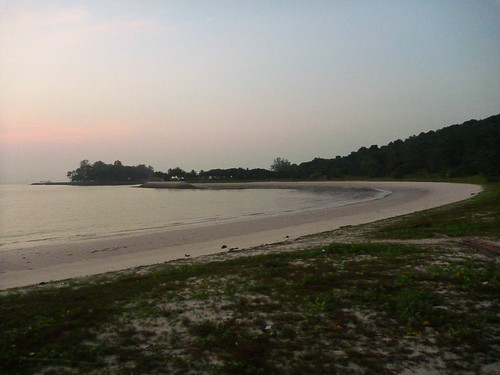
A small group headed out to visit Lazarus Island on one of the last early morning low tides of the year. While the rest headed towards the rocky shores of Lazarus Island, Kok Sheng and I decided to explore a lagoon located in the north of Seringat-Kias; James and I had previously checked out this area in April 2010. On that occasion, we visited that lagoon during the day, and it was raining, so we might have missed out on a lot of the marine life that lived in that lagoon. Hopefully, we would find a more interesting variety of critters this morning.

As we made our way to the shore, we encountered several common Asian toads (Duttaphrynus melanostictus). We also spotted a few large-tailed nightjars (Caprimulgus macrurus) resting on the ground, their eyes glowing pink as they reflected the light from our torches. Rusty millipedes (Trigoniulus corallinus) and African giant snails (Achatina fulica), non-native invertebrates commonly seen in our urban parks and gardens, were extremely abundant, and I'm hoping that we didn't accidentally tread on too many of them as we walked.
The edges of the lagoon were sandy, with dense patches of algae. The zoned horn snails (Batillaria zonalis), which we nickname the bazillion snails, were present in great numbers.

Shadow goby (Acentrogobius nebulosus);
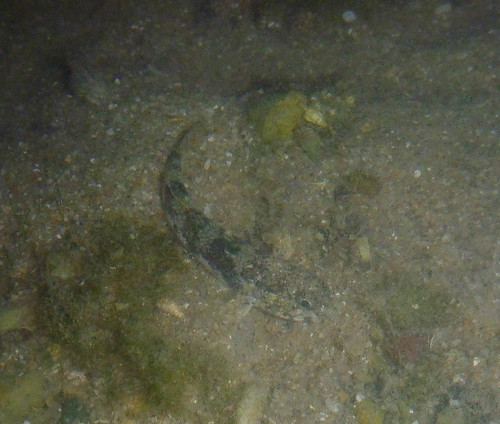
Frill-fin goby (Bathygobius sp.);

There were lots of small fishes swimming around; various halfbeaks (F. Hemirhamphidae), tropical silversides (Atherinomorus duodecimalis), young mullet (F. Mugilidae) and Kops' glass perchlets (Ambassis kopsii). Further out in the deeper parts of the lagoon, loud splashing hinted at the presence of much larger fishes.
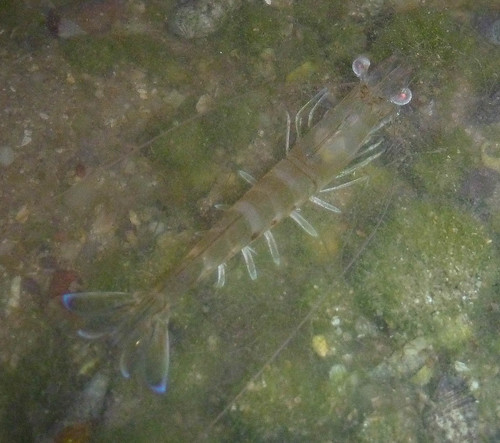
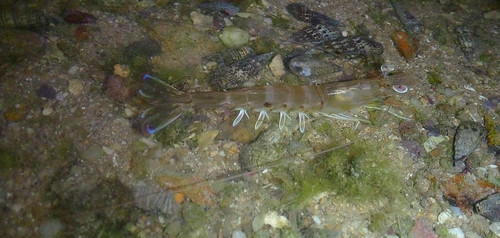
There were many blue-tailed prawns (Penaeus latisulcatus).
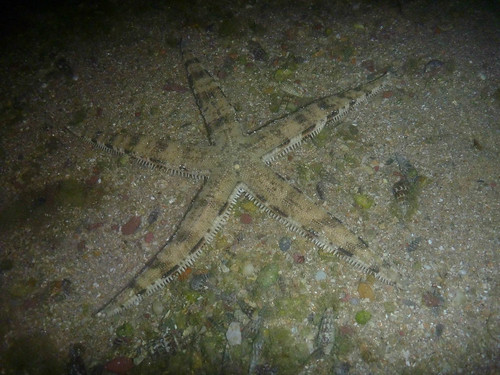

We discovered plenty of common sea stars (Archaster typicus).
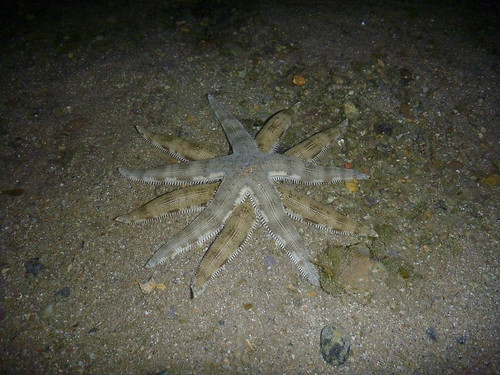
Some of these sea stars had paired up; this isn't actual mating, but pseudocopulation.

This flatworm looks a lot like the dawn flatworm (Pseudobiceros uniarborensis), but lacks the white edge. Could this be a completely different species? There's so much we still don't know about our marine biodiversity!
We walked all the way to the outlet of the lagoon, where the sandy shore was replaced by rocks. Here we found lots of nerites, belonging to various species.
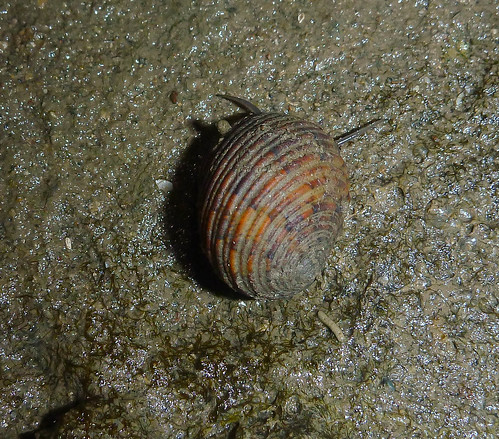
Chameleon nerite (Nerita chameleon);
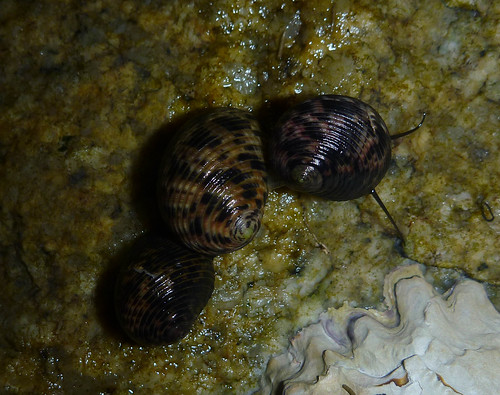
Waved nerite (Nerita undata);
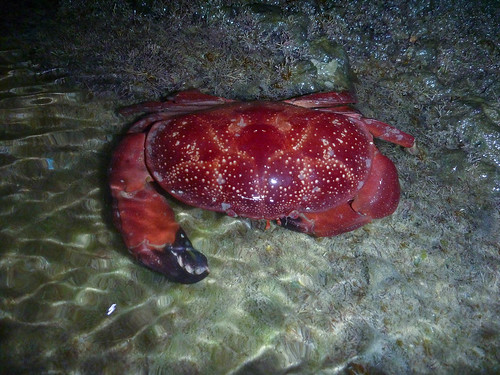
In the narrow channel that was the outlet for the lagoon, we saw a red egg crab (Atergatis integerrimus).
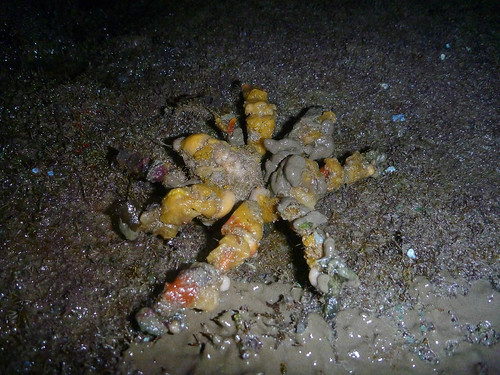
As well as a velcro crab (Camposcia retusa).
We weren't able to explore the outside of the seawalls, as the tide was too high and the rocks were too slippery. So we headed to the long sandy beach that we usually explore on our visits to this island.
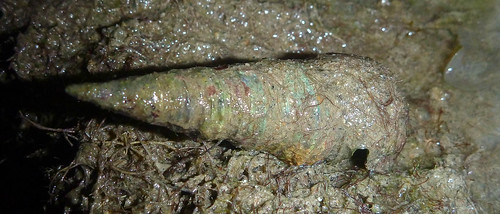
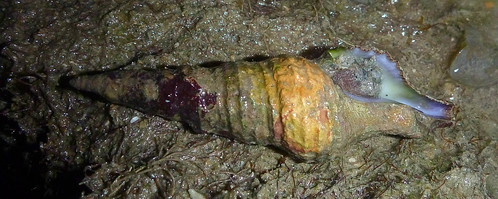
Close to the seawall at one end of the beach, Kok Sheng found this snail that we haven't seen before.
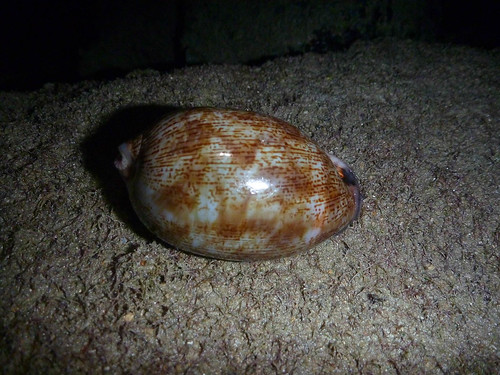
There was an Arabian cowrie (Cypraea arabica) among the rocks nearby.

There were quite a few starry flatworms (Pseudobiceros stellae) on this shore.
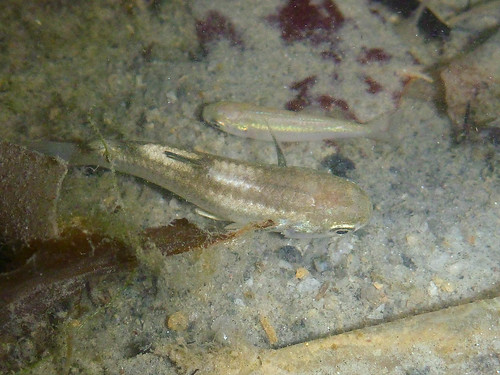
Very young squaretail mullet (Liza vaigiensis) and tropical silverside;
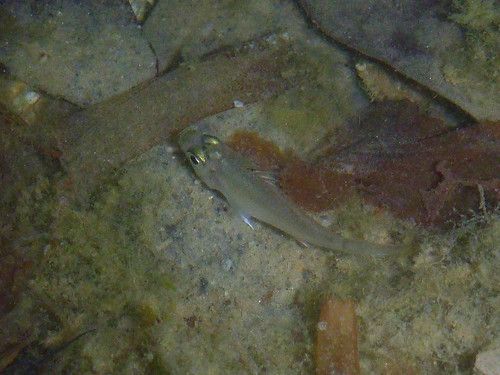
Very young Kops' glass perchlet;

A small carpet anemone (Stichodactyla sp.). I'm not sure if this could be the mini carpet anemone (Stichodactyla tapetum).
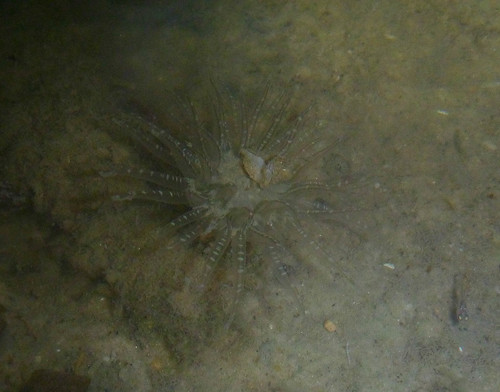
Striped sand anemone (Actinaria);
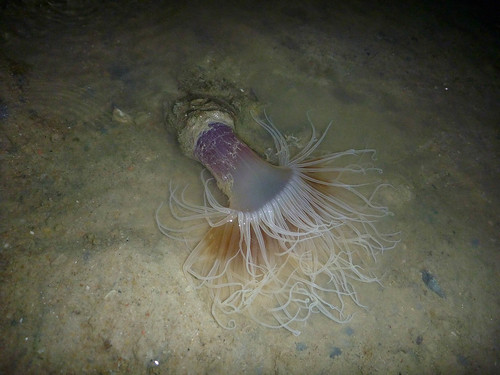
This isn't a true sea anemone, but a cerianthid or peacock anemone (Ceriantharia).
We found various types of snails.
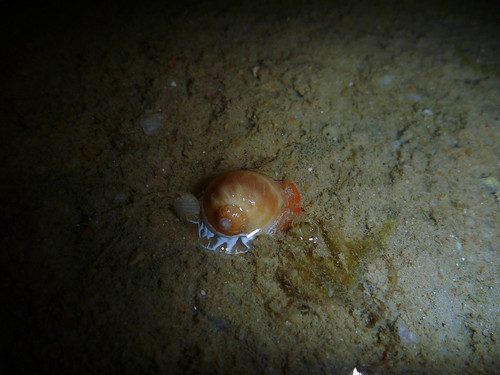
Such as the pink moon snail (Natica zonalis).
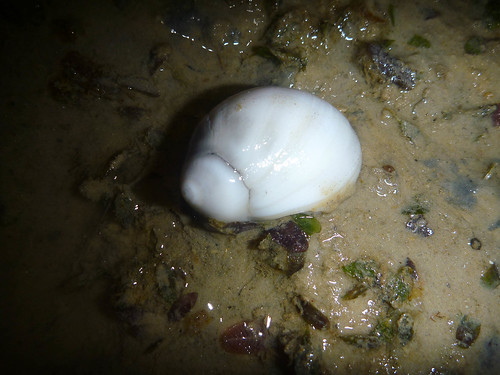
And oval moon snail (Polinices mammilla).

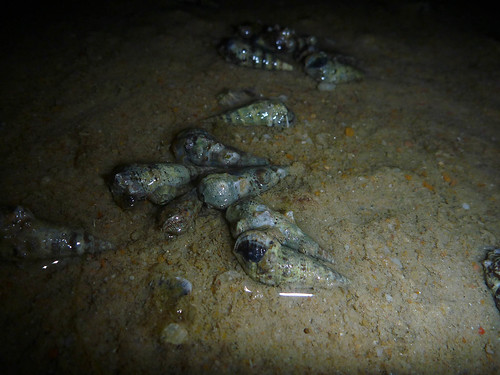
The bazillion snails were everywhere in great numbers.
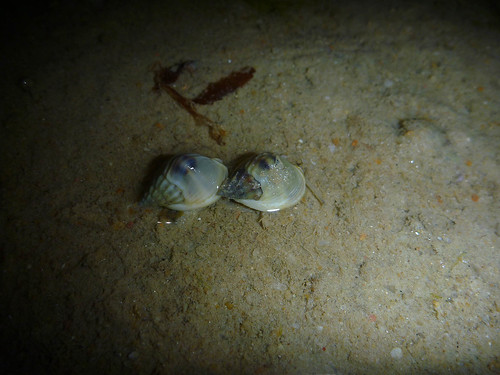
The black whelks (Nassarius pullus) were actively on the prowl. Unlike the bazillion snails, which graze on microscopic algae and detritus, whelks are scavengers.
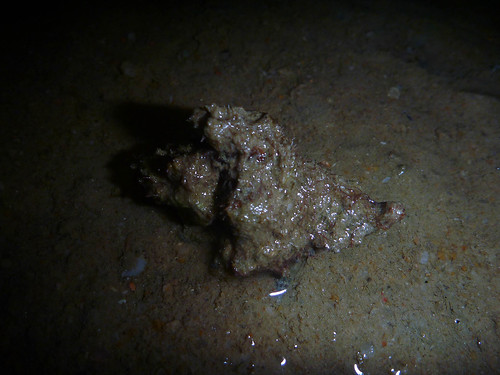
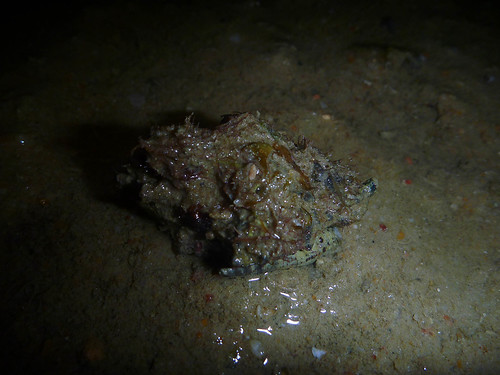
These larger lumps are actually firebrand murex (Chicoreus torrefactus), camouflaged by a thick coat of algae and sediment.

Some of these appeared to have been feeding on the bazillion snails.
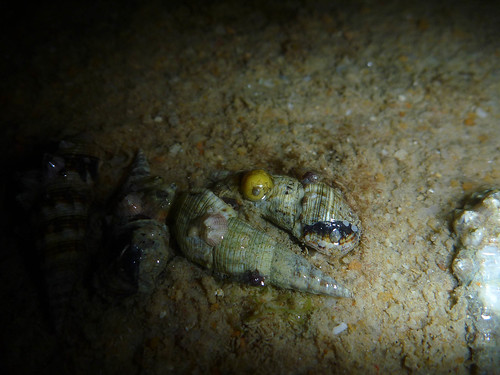
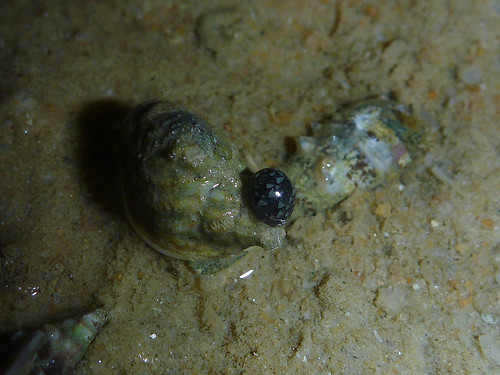

There were also several tiny dubious nerites (Clithon oualaniensis).

I found a large spotted moon crab (Ashtoret lunaris). I also saw many tiny flower crabs (Portunus pelagicus).
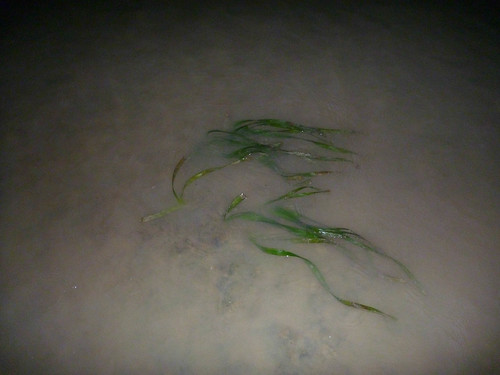
Most of the shore was carpeted with blades of spoon seagrass (Halophila ovalis). Slightly further out, I came upon a small clump of tape seagrass (Enhalus acoroides).
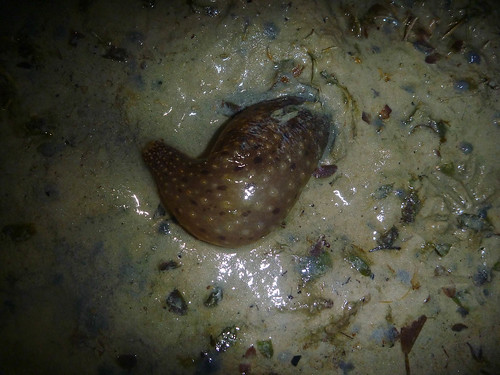
I stumbled upon one end of a remarkable sea cucumber (Holothuria notabilis), buried in the silt.

More echinoderms: a white sea urchin (Salmacis sp.) washed up by the waves.
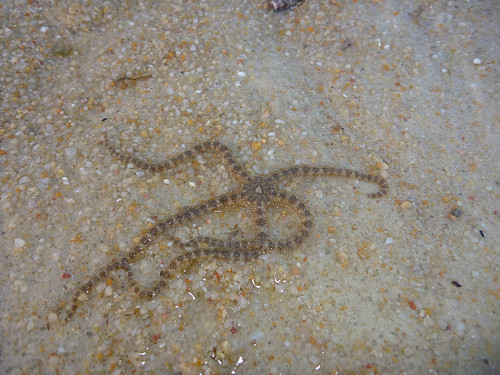

As well as an unidentified brittle star (Ophiuroidea).
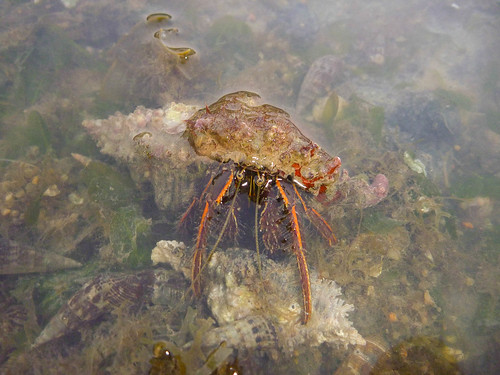
Orange striped hermit crab (Clibanarius infraspinatus);
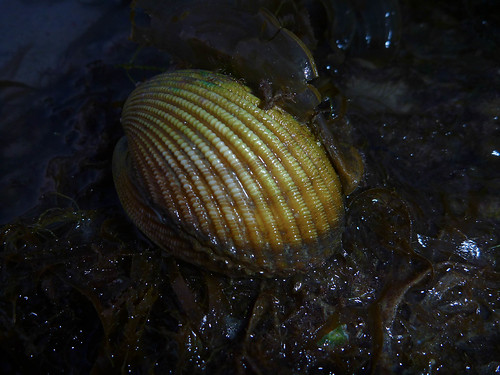
Some sort of cockle (F. Cardiidae);
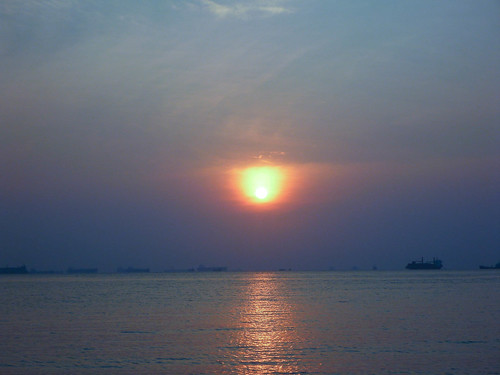
The sun rose, and we headed back to the jetty to wash up and wait for the others.
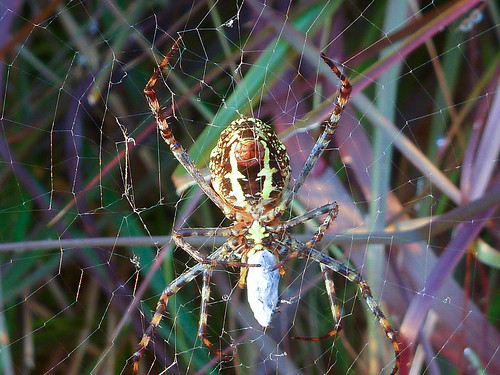
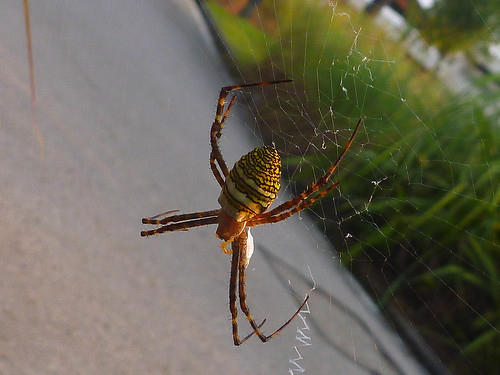
I watched an oval St Andrew's cross spider (Argiope aemula) wrap and feed on an insect that flew into its web.
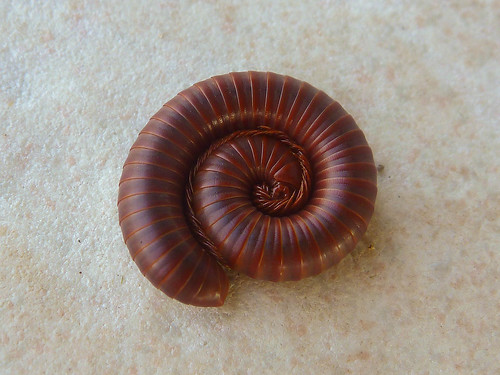
Some rusty millipedes were still crawling around on the paths.
We saw quite a few birds; there was a brahminy kite (Haliastur indus) soaring above us at the beach, and we heard the cackling calls of collared kingfisher (Todiramphus chloris). As we headed inland, we came upon yellow-vented bulbul (Pycnonotus goiavier), olive-backed sunbirds (Cinnyris jugularis), and a small flock of scaly-breasted munia (Lonchura punctulata).
Kok Sheng and I went to look at the marine life that had colonised the pontoon and lower parts of the seawall. I didn't take any photos, but we saw dense growths of seaweeds, both hard and soft corals, and sponges. Thorny sea cucumbers (Colochirus quadrangularis) clung to the sides of the pontoon, filtering small particles from the water with their feeding tentacles. We saw half a dozen long-spined black sea urchins (Diadema sp.) perched amongst the soft corals and sponges on the seawall, as well as a large batfish (Platax sp.) and small groups of silver moonies (Monodactylus argenteus).
The rest eventually returned, and shared with us their findings. Some of them are featured in these blog posts written by others who went on this trip:
Exploring a new stretch of Seringat-Kias by Kok Sheng
My first visit to Lazarus Rocky Shore by Pei Yan
Special finds on Lazarus Island